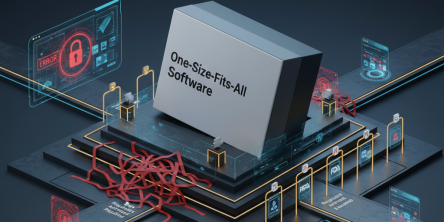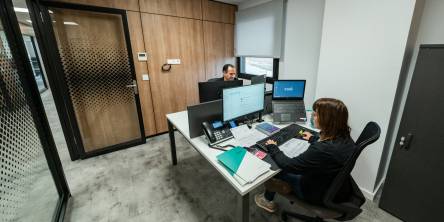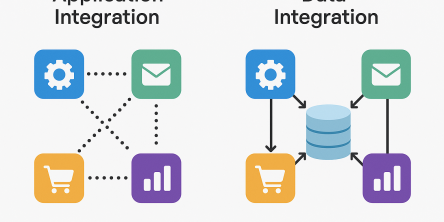Best Practices for Continuous Integration in QA Testing

In today’s software development and increasingly agile environments, continuous integration (CI) has proved to be a critical best practice that comprehensively applies to QA testing. Continual integration helps provide the necessary steps to ensure that the new code can be integrated with the rest of the software products' code base to be developed in an effective environment that is as error-free as possible. This process is especially important for companies engaged in software testing to improve productivity and Guinea quality software products every time.
Understanding Continuous Integration in QA
Continuous integration is the process of integrating code changes into a shared code repository frequently while maintaining a high level of rigor and quality QA teams should have a grasp of continuous integration because integration is a vital part of QA of continuous integration The meaning of continuous integration Within the context of QA, continuous integration is the act of integrating code changes into the master code base more often and frequently while ensuring high standards
Continuous integration in QA testing means the process through which changes made in the code by different developers can be taken and assimilated simply into the Software Project. This approach entails a more frequent commitment to the code base, and the system automatically checks for errors to identify them in their early stages. I want to offer an instant response that allows work that needs to be corrected to be corrected immediately; this automatically enhances the product quality and the velocity of production.
The Role of Software Testing Companies
Moreover, software testing companies play a crucial role in successfully identifying optimal CI strategies. They provide the needed specialist and technical perspectives, especially regarding proven Quality Assurance testing environments. These companies ensure that each integration has no trace of bugs and characteristics that will harm the software and doesn’t proceed to other stages of the development process, as this guarantees the software’s safety from failure.
Preparations for the Implementation of CI in QA Testing
1. Maintain a Robust Version Control System
This is because version control is the key to effective CI processes, and a well-structured version control system is required. Generally, during a software testing process, software testing companies must understand that all code, configurations and databases used on the project must be contained in version control. It should also accommodate version control features such as branching/merging, whereby developers can work on different features without implementing them directly in the main program.
2. Automate the Build and Deployment Process
In the case of CI, automation is clearly an essential component. This means that it ensures that builds and testing are created and done automatically, thus preventing human interference. Automated deployment scripts are additionally helpful in the deployment process, where the applications can be deployed successfully without a variation in the environmental settings.
3. Write Testable Code
This is a fundamental principle that developers should abide by while writing their code, especially Unit Test Code. This can be achieved by employing design patterns that are m=modular and testable. Many software testing businesses encourage and promote such approaches as TDD often perform tests before the actual software code is written to make sure that no faults are allowed to be incorporated in the software from the beginning.
4. Implement Comprehensive Automated Testing
Automated testing plays a critical role in a CI process since it offers growing feedback on the well-being of the application. And this consists of unit testing, integration testing and functional testing. Software testing companies should strive to utilize these software tests to asses as many uses as possible to validate and verify the software with every integration.
5. Use Configuration Management Tools
There is also a role of configuration management tools that assist in writing, configuring and managing development, test and production environments. Such consistency helps mitigate one of the age-old challenges, better known as the ‘it works on my machine’ issue, where software exhibits different behaviours in different environments.
6. Prioritize a Clean Build Environment
Remote build: As the name suggests, it involves building the application or software at a remote site with its own configuration and build environment. Clean build: A clean build environment means that each build is independent of the other because it has no dependency on the previous build and thus has its own environment. This practice is very useful in preventing the bad practice of getting dependencies by default and keeping the construction clean.
7. Foster a Culture of Quick Feedback
I agree with this statement, and some of my points to expand on are as follows: In CI, the feedback loop in the learning process has to be as short as it gets. This includes tests, automated checks, possible rapid reviewing, and all kinds of inter-team and intra-team communication. This can be managed by software testing firms in collaboration with the developers through the use of chatbots or other features that give real-time information about faulty areas.
8. Monitor and Optimize the CI Pipeline
Therefore, constant monitoring of the CI pipeline is essential in assessing its efficiency. This entails averting the amount of time taken in building and observing build success rates and integration frequencies. These considerations can then be advanced to enhance the CI process by comparing with the metrics obtained.
Conclusion
Continuous integration as a practice can be considered an evolution of the traditional ways of software building as it focuses on error identification and integration as early as possible. Application, CI has increasingly become not simply a technical necessity for software testing companies but a business essential in the global practice of QA testing. This is because, by following such standards much a greater possibility for better development procedures and thus, the delivery of significantly superior software comes into focus.
The main factor of Cloud adoption in companies is that these practices require planning and dedication to bring big long-term impacts like faster release times, increased software quality, and improved morale. These values are likely to remain relevant as technology progresses, making it evident that the principle of continuous integration is still key in the current software development process – that is, if software testing companies have their way in the future.
Similar Articles
At first glance, off-the-shelf software appears to be a dream come true. They are quick to set up, cheaper upfront, and marketed as “universal.”
A modern business must continually adapt. This bit everyone seems to know.
The modern healthcare industry is undergoing a significant transformation. The models of healthcare that we are used to thus far are now making way for a more data driven approach
In the modern world, maintaining good health often feels like a constant challenge. Between busy lifestyles, sedentary habits, and lack of motivation, many people find it difficult to stay consistent with exercise, diet, or wellness practices.
Every news publisher's dream, or just getting started, hits that wall sooner or later. What do you build your site on? You’ve basically got two roads: WordPress or custom development.
Discover key features construction teams need in permit tracking software to boost efficiency, stay compliant, and streamline project management.
Thanks to cloud computing, specialized SaaS apps have become rather accessible.
Let’s be honest – managing royalties isn’t exactly the fun part of working in media or publishing, but it is very important because it protects the creator’s rights and work ownership.
The Software as a Service (SaaS) industry continues to transform before 2025 which creates new obstacles for business operations.








